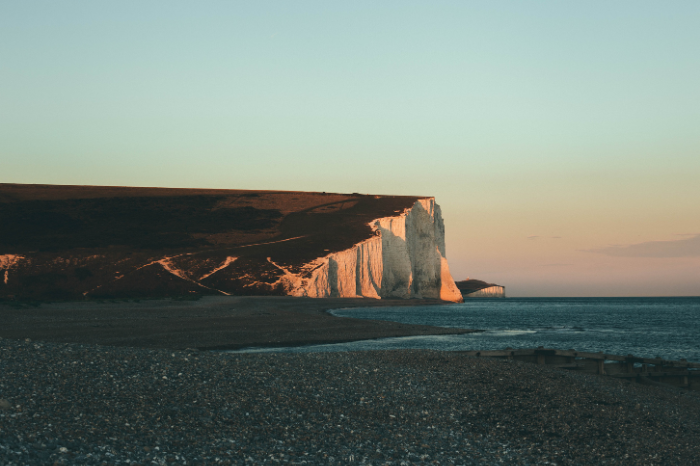
About
Sussex Nature Recovery is home to the two Local Nature Recovery Strategies (LNRS) being developed to cover East Sussex, Brighton & Hove and West Sussex. LNRS are blueprints for targeted action for nature that everyone in Sussex can be part of.
Why do we have to act?
The State of Nature 2023 report provides a benchmark for the status of UK wildlife. Now in its 10th year, this most comprehensive review of our biodiversity reveals the continual loss and decline of UK plants, animals, birds, fish and fungi. Headlines from the report include:
- The UK is one of the most nature-depleted countries on earth.
- Nearly 1 in 6 species of British species are threatened with extinction.
- Farmland birds have declined by 58% on average since the 1970s.
Urgent, ambitious and locally coordinated efforts are needed to reverse this crisis, along with bigger, better, and more joined up spaces for nature across the country. Local Nature Recovery Strategies are a key tool to help do this.

Joeseph Pearson - Unsplash
What are the Local Nature Recovery Strategies (LNRS)?
Outlined in the Environment Act 2021, LNRS are a new system of spatial plans for nature. 48 strategies are being developed at the county level which will join together to cover the whole of England.
LNRS are designed to be evidence-based, locally led and collaborative and must follow statutory guidance and meet LNRS regulations. The process set out in these includes:
- Mapping our existing valuable areas for nature.
- Reviewing the condition of our nationally or locally important habitats & species and the pressures they face now and in the future.
- Bringing local people, communities and organisations together to establish the environmental issues that are most important to them.
- Collaboratively agreeing the priorities for nature’s recovery and identifying achievable measures to deliver them.
- Mapping proposals for creating or improving habitats and species, and for delivering wider environmental benefits.
.png)
Definitions
Priorities
The habitats and species the strategy will focus on supporting, based on ecological data and the views to local people, groups and organisations living and working in Sussex. They could include, for example, increasing our populations of Starlings or creating more hedgerows and chalk grasslands.
Measures
Achievable actions that can be taken to help deliver the priorities and wider environmental benefits. Examples include planting a wildflower meadow to help pollinators, creating urban ponds to provide vital freshwater habitats for species like dragonflies, or planting trees to create corridors between woodlands.
Bigger, better, more joined up
Wildlife needs space to thrive, so larger, and healthier sites that are connected to each are really important. 'Bigger, better and more joined up' is a recommendation from the Making Space for Nature Report - 2010, which continues to inform policy today. It urges us to think about how we provide for nature at a landscape scale.
What LNRS aim to do
By faciltiating a collaborative, evidence-led process to deterimine what should be done by those who live and work locally, the strategies aim to drive coordinated, practical and focussed action and investment to help nature recover. As they also seek to identify where these actions have wider environmental benefits - such as flood protection, cleaner water, better air quality, carbon capture, and enhanced health and wellbeing - they can help people thrive too.
The Strategies will be used to:
- Focus future effort and funding into local priorities for nature, including Biodiversity Net Gain (BNG)
- Aid collaboration by enabling public, private and voluntary sectors work more effectively together.
- Guide local planning, and will inform public authorities strengthened biodiversity duty.
- Identify opportunities for 'nature-based solutions' to wider environmental problems like flooding, climate change mitigation & adaptation or poor water quality.
- Improve targeting: ensure that the right things are done in the most effective areas.
What the Strategies will not be used to do
Local Nature Recovery Strategies will not dictate how land is used or limit the choices land managers have on their land. They do not provide new protections for the habitats, species or places that are collectively prioritised. The strategies will help to target future effort and funding and their aim is to provide a range of options and evidence to inform decisions; these are recommendations and not commitments for delivery.
.jpg)
Timeline
The Responsible Authorities were appointed in the summer of 2023 when they began setting up the process and building the baseline evidence that supports the strategies.
This evidence draws together ecological data about the habitats and species in Sussex, their condition and pressures. It will also produce a map of the designated places for nature in Sussex. The evidence will be peer reviewed by a panel of experts in early spring of 2024.
Throughout 2024, local people, communities, landowners and organisations will be engaged to provide their priorities and help identify measures. Events and activities will include surveys, webinars, meetings, briefings, presentations and workshops. These events and updates on progress will be promoted via this website and our newsletter.
In early 2025, the draft strategies will be shared for public consultation before being published later in the year. Both the draft version and the final documents will be available on this website so you can read, download and comment.
Once published, the County Councils and partners and other authorities will assess and report on the progress of their LNRS every three to five years.
.jpg)